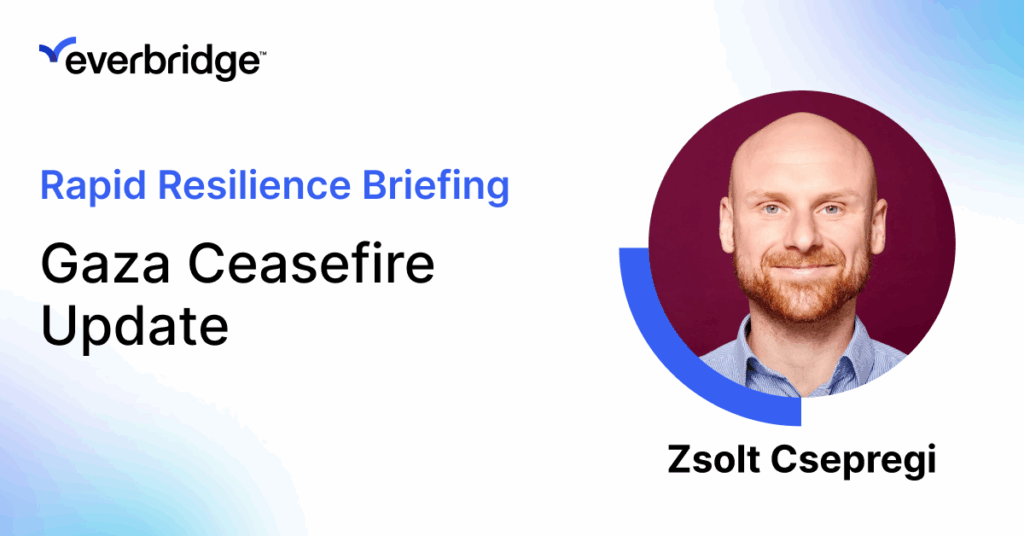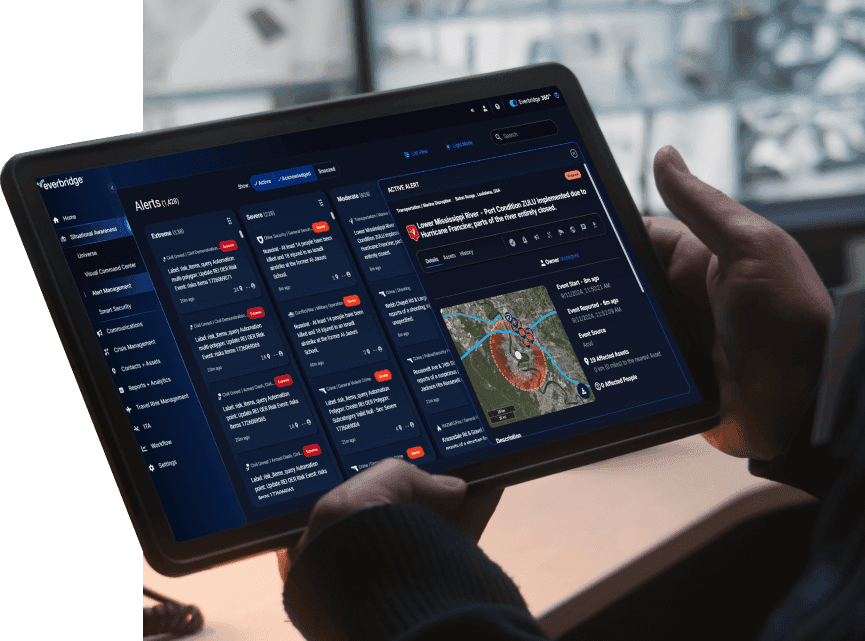Gaza ceasefire update

In our latest Rapid Resilience Briefing, we analyze the new phase-one Gaza ceasefire, a fragile starting point but not a complete peace plan.
Full transcript
[[00:05.0]
Hello, my name is Zsolt Csepregi. I’m the regional, analyst for the Middle east and North Africa at Eberbridge’s Global Insights Team. Today I will outline the ceasefire deal between Israel and Hamas and highlight the associated security and business risks. The newly announced Gaza ceasefire, which was brokered by the United States, Egypt, Turkey and Qatar, is a phase one agreement which is designed to secure the release of Israeli hostages in exchange for Palestinian prisoners, assured limited withdrawal of Israeli forces from Gaza and expanded humanitarian aid access.
[00:39.4]
It’s an important step, but it’s not a solution. Mediators themselves call it a starting point. A narrow humanitarian and political transaction, but not a complete peace plan. The goal right now is simple, to stop the immediate fighting and get the Israeli hostages home.
[00:55.9]
Everything beyond that, from Hamas disarmament to the future of Gaza’s governance, remains deeply contested. The second phase, meant to turn this truce into a sustainable political settlement, will be much harder. Israel insists that Hamas must be disarmed and excluded from the governance of Gaza.
[01:14.9]
While Hamas for its part, refuses to surrender control or its legitimacy. These positions are fundamentally incompatible once the immediate pressure eases. So the Israeli hostages are home and Israeli troops pull back, both sides will have far less incentive to compromise.
[01:34.7]
External actors are also shaping this trajectory. Palestinian Islamic Jihad has cautiously accepted the deal, but there is still a risk that more militant elements within Hamas or BIG could splinter towards Islamic State aligned, groups that outrightly reject any form of political compromise with Israel.
[01:55.6]
The Houthis in Yemen continue to reject the ceasefire outright, keeping Red Sea maritime risks elevated, while Hezbollah remains deliberately ambiguous along the northern border of Israel. For businesses and international operators, this environment represents de escalation without guaranteeing a resolution.
[02:15.4]
It’s a reduction in immediate violence, but not in underlying instability. So logistics and air travel are likely to remain volatile with potential disruptions from renewed rocket fire, drone attacks or political protests.
[02:30.5]
And beyond the region, pro Palestinian and pro Israeli demonstrations will continue across major global cities, carrying reputational and operational risk for multinational firms. Global companies should therefore remain vigilant and adaptable as this first phase of the ceasefire unfold and negotiations on the second phase start.
[02:51.0]
Even if progress continues, instability will persist across the Middle East. Organizations should diversify logistic routes, review travel and security protocols and maintain flexible staffing and crisis communication plans. Monitoring both of regional developments as well as protest movements globally will be key in protecting personnel and operations.
[03:12.8]
The coming months will demand strategic patience coupled with operational flexibility as the ceasefire talks may reduce violence temporarily but are far from assuring a lasting stability.




